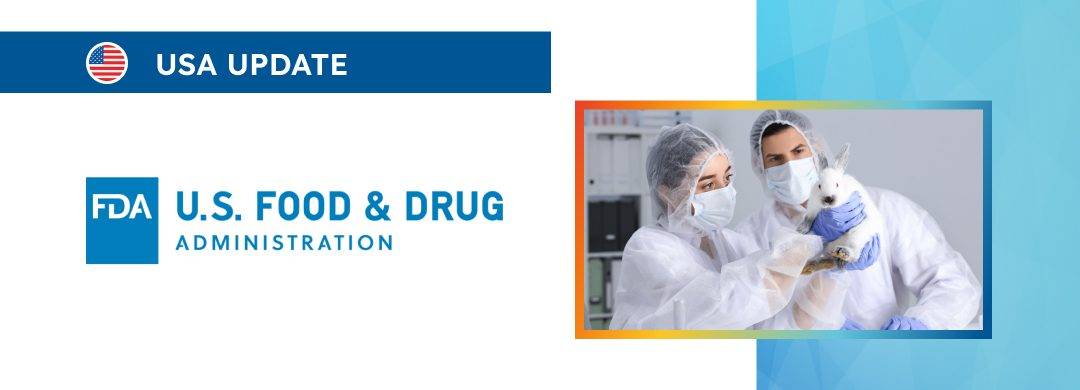The new article highlights the aspects related to the design of animal studies involving medical devices to be considered by the responsible parties in order to ensure the accuracy and reliability of the results.

Table of content
The Food and Drug Administration (FDA or the Agency), the US regulating authority in the sphere of healthcare products, has published a guidance document describing general considerations for animal studies intended to evaluate medical devices.
The document provides an overview of the applicable regulatory requirements, as well as additional clarifications and recommendations to be taken into consideration by medical device manufacturers and other parties involved in order to ensure compliance thereto. At the same time, provisions of the guidance are non-binding in their legal nature, nor are they intended to introduce new rules or impose new obligations.
Moreover, the authority explicitly states that an alternative approach could be applied, provided such an approach is in line with the existing legal framework and has been agreed with the authority in advance.
The scope of the guidance covers, inter alia, the matters related to study planning and design.
Study Planning and Conduct
First of all, the FDA requires that animal studies should be conducted in compliance with a detailed written protocol.
This protocol is essential for delineating the study’s objectives and the methodologies employed. A critical aspect of this protocol is its clarity and comprehensiveness, ensuring that the FDA can fully understand and reconstruct the study.
The guidelines also suggest conducting preliminary exploratory animal studies, particularly in scenarios where there is a significant learning curve that could affect animal response.
This is particularly relevant in cases involving new devices or procedures, where investigator training and device placement challenges might influence animal responses.

Study Design: Key Points
According to the guidance, the design of an animal study must aim to replicate a clinical setting as closely as possible in order to ensure the accuracy and reliability of its results. This includes considering the device’s intended use and proposed labelling.
For studies conducted outside the US, an equivalent protocol must be in place. The FDA encourages the use of established endpoints, time points, and methods, but also acknowledges the need for deviation in certain cases, such as when the device features or new indications warrant different evaluations.
The protocol should be comprehensive, avoiding any limitations on data collection or reporting, to provide a complete understanding of the study.
Bias Reduction and Data Quality
In order to maintain the integrity and quality of the data, the FDA recommends various strategies to minimize bias.
These include randomization to avoid selection and procedural biases, blinding or masking procedures to prevent assessment bias, and the use of multiple observers to eliminate perception bias.
The choice of experimental design is also crucial to increase precision and reduce variation.
Other methods, such as the inclusion of control arms and calibration of instruments, are suggested to minimize measurement errors and contributions from study personnel with potential conflicts of interest.
Study Objectives
The objectives of the study should be closely tied to the risk analysis of the device. This includes considering known risks of the device type and developing specific objectives to address these risks.
Acceptance criteria should be established based on scientific rationale. In addition, the study should also focus on device performance and handling, as these are essential elements of the device’s safety profile.
Reporting on these aspects should be detailed, and a semi-objective rating scale is recommended for evaluating device performance and handling.
Local and Systemic Effects
According to the document, the study must also consider both the local and systemic effects of the device.
This includes understanding the potential adverse effects on different tissues and physiological systems. Such comprehensive evaluation is vitally important to assess the full impact of the device.
Selecting an Animal Model
The choice of the animal model is critical and should be based on the best available scientific information.
As explained by the FDA, the model should closely simulate the clinical setting and be capable of addressing the study objectives.
In cases where established models are not available, the selected model should still be scientifically justified.
The FDA offers a process for feedback on the chosen animal model through the Q-Submission process described in detail in a separate guidance document issued by the authority.
Sample Size and Groupings
The authority further emphasizes that determining the appropriate number of animals and their grouping is a key aspect of study design.
The aim is to use the minimum number of animals necessary while ensuring meaningful and predictive outcomes. This decision should be based on exploratory testing and other relevant data.
The sample size calculation should consider such factors as standard deviation, control group size, the difference between treatment and control groups, and animal uniformity.
This approach helps in reducing experimental variability and ensures robust data interpretation.
Conclusion
In summary, the present FDA guidance provides a comprehensive framework for conducting animal studies.
The guidelines issued by the authority emphasize the need for detailed protocols, bias reduction strategies, rigorous evaluation of risks and performance, and careful selection of animal models and sample sizes.
The ultimate goal is to ensure that the studies are as informative and reliable as possible, contributing to the safe and effective use of medical devices.
How Can RegDesk Help?
RegDesk is a holistic Regulatory Information Management System that provides medical device and pharma companies with regulatory intelligence for over 120 markets worldwide. It can help you prepare and publish global applications, manage standards, run change assessments, and obtain real-time alerts on regulatory changes through a centralized platform. Our clients also have access to our network of over 4000 compliance experts worldwide to obtain verification on critical questions. Global expansion has never been this simple.

